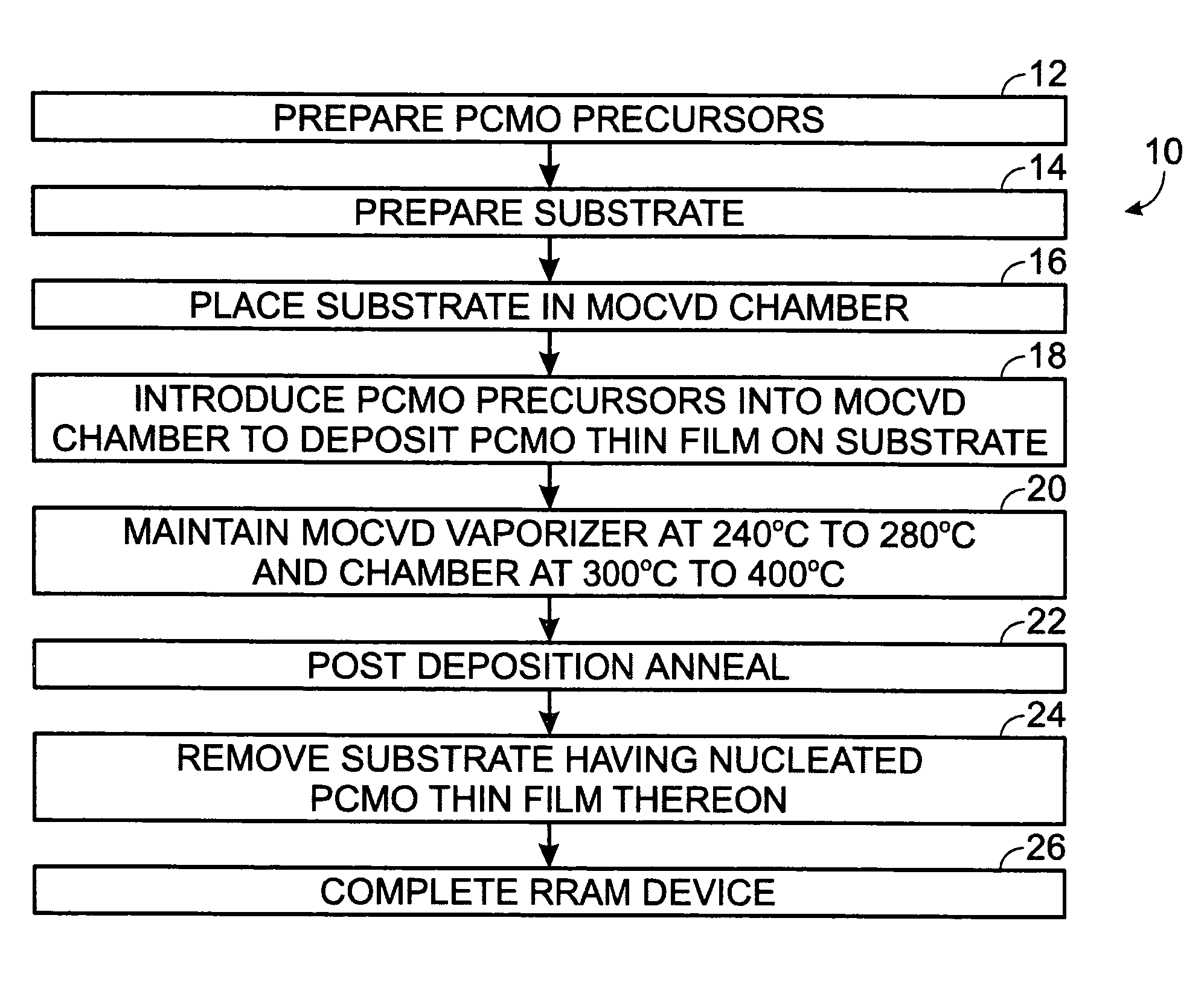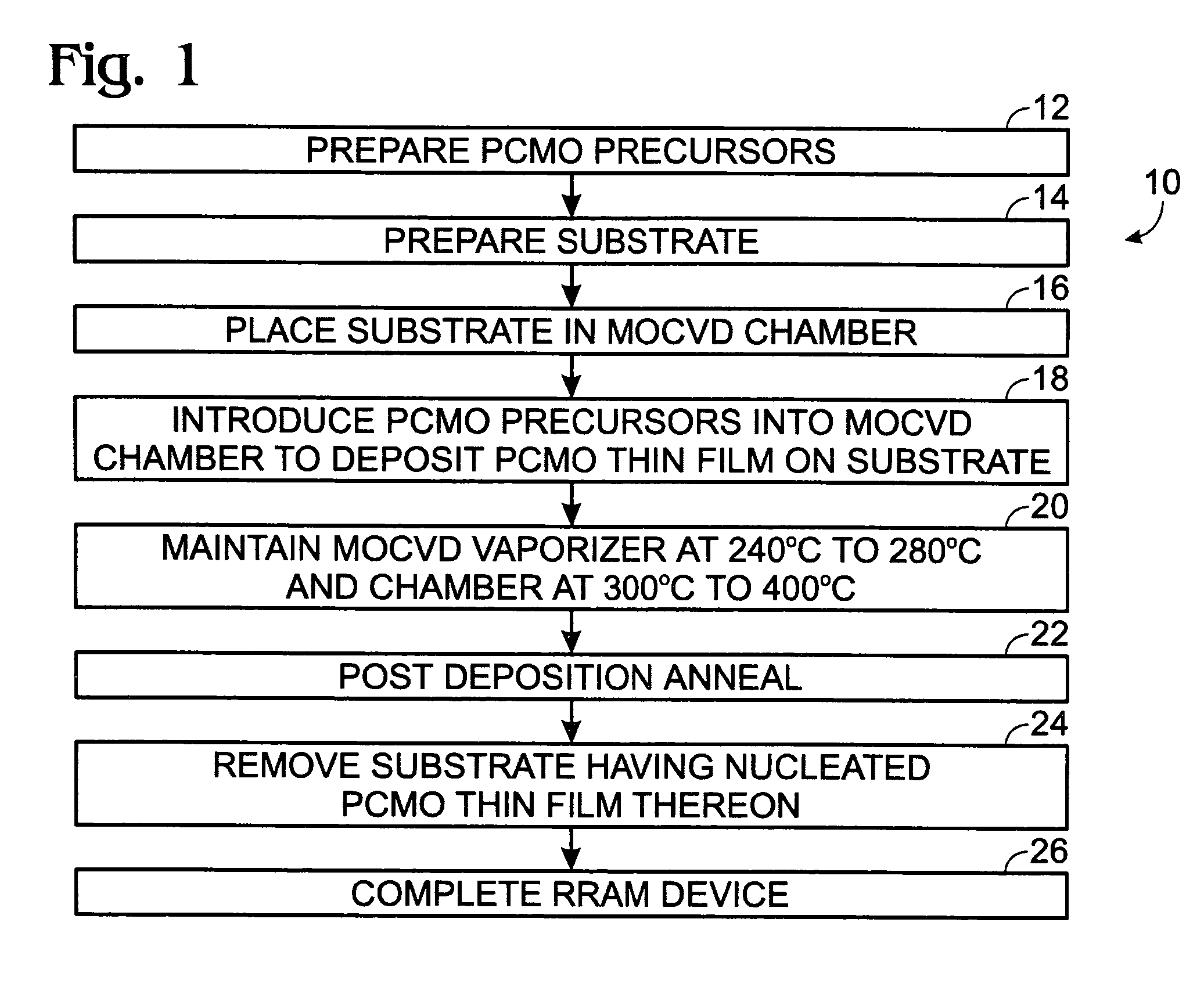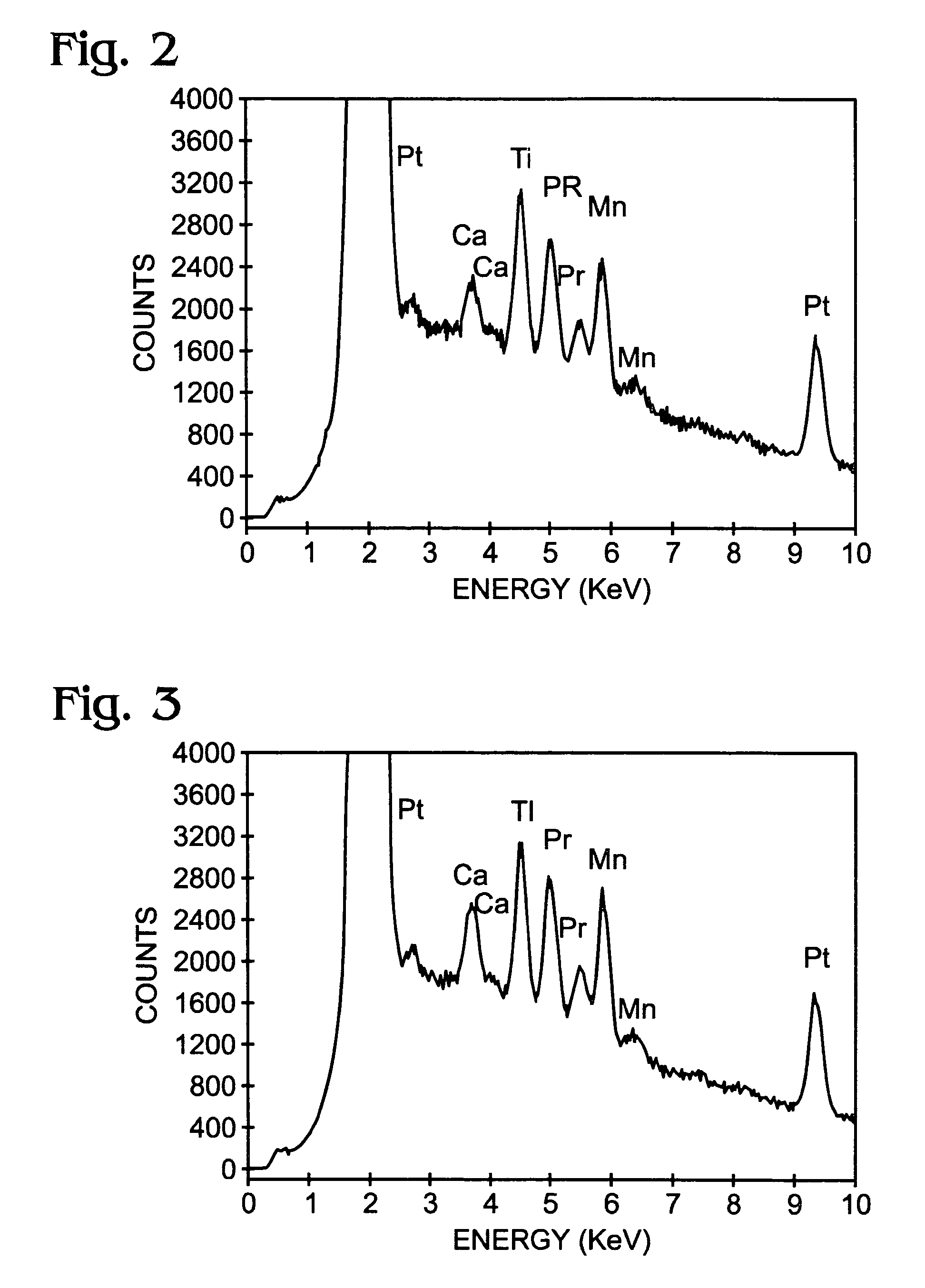Low temperature MOCVD processes for fabrication of PrXCa1-xMnO3 thin films
a thin film, low temperature technology, applied in the direction of coating, chemical vapor deposition coating, metallic material coating process, etc., can solve the problem of poor thermal stability of electrodes, and achieve the effect of enhancing surface nucleation
- Summary
- Abstract
- Description
- Claims
- Application Information
AI Technical Summary
Benefits of technology
Problems solved by technology
Method used
Image
Examples
Embodiment Construction
[0017]Lower temperature deposition of PrxCa1−xMnO3 (PCMO) thin film materials has many advantages for integration of Resistive Random Access Memory (RRAM) devices. However, only crystallized PCMO thin films demonstrate RRAM functional properties with bipolar switching. Therefore, optimized low temperature MOCVD processes to deposit crystallized PCMO thin films by using enhanced surface nucleation are advantageous.
[0018]The following describes low temperature process 10 for optimization of MOCVD to deposit crystallized PCMO thin films by using enhanced surface nucleation, with reference to FIG. 1. The PCMO precursors are prepared 12 using solid organometallic compounds: Pr(thd)3 Ca(thd)2, Mn(thd)3, where thd is C11H19O2. The organic solvents are butylether and tetraglyme. The 1N metal of each Pr(thd)3 Ca(thd)2, Mn(thd)3 with ratio of between about 0.9:0.6:1, are separately dissolved in a mixed solvent of butyl ether and tetraglyme in the volume ratio of 3:1. The precursor solutions h...
PUM
| Property | Measurement | Unit |
|---|---|---|
| Temperature | aaaaa | aaaaa |
| Temperature | aaaaa | aaaaa |
| Temperature | aaaaa | aaaaa |
Abstract
Description
Claims
Application Information
 Login to View More
Login to View More - R&D
- Intellectual Property
- Life Sciences
- Materials
- Tech Scout
- Unparalleled Data Quality
- Higher Quality Content
- 60% Fewer Hallucinations
Browse by: Latest US Patents, China's latest patents, Technical Efficacy Thesaurus, Application Domain, Technology Topic, Popular Technical Reports.
© 2025 PatSnap. All rights reserved.Legal|Privacy policy|Modern Slavery Act Transparency Statement|Sitemap|About US| Contact US: help@patsnap.com



